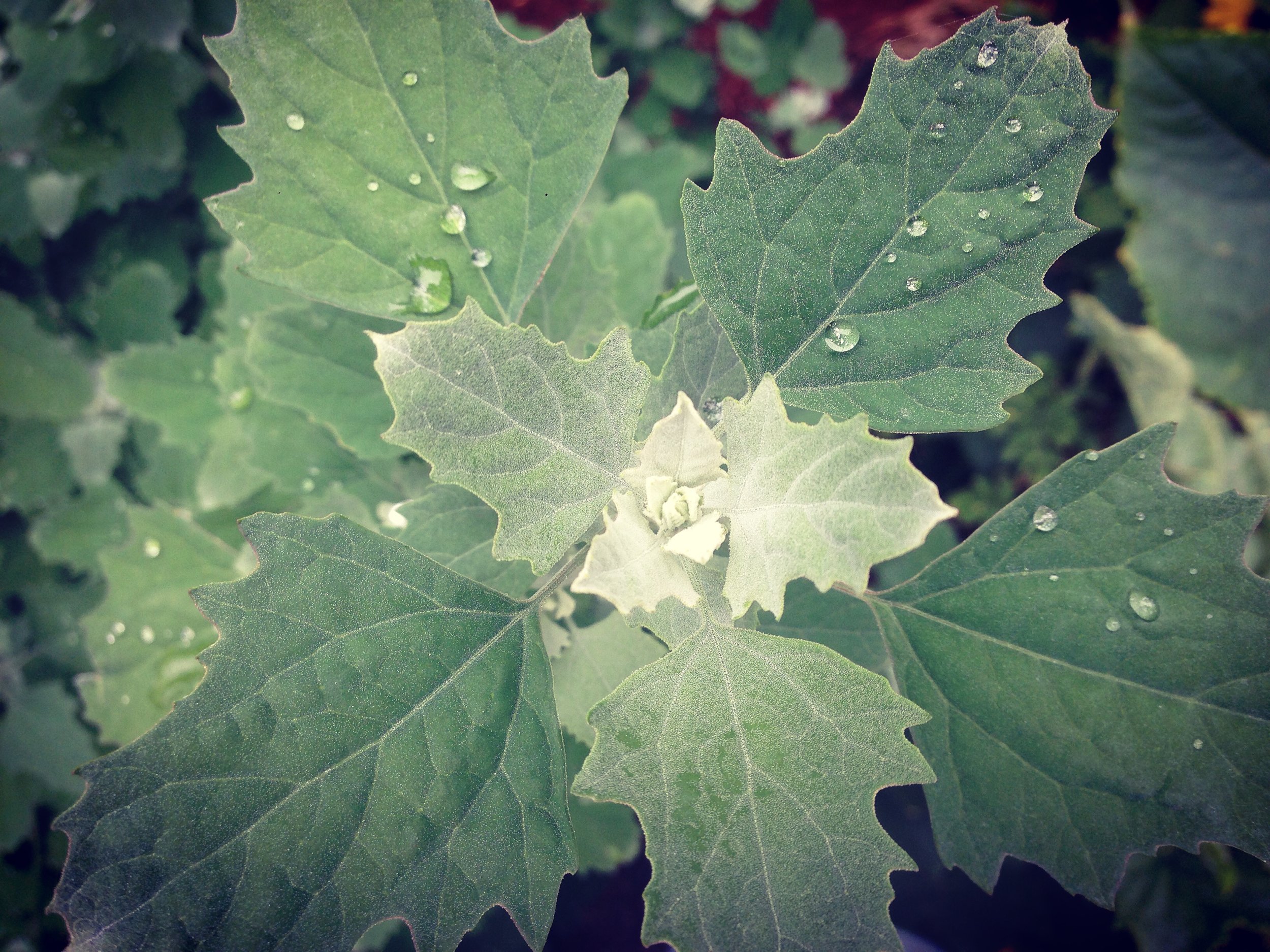Plant profile: Chenopodium Album, Lamb's Quarters
At Lyttleton Gardens, we love our Lambs Quarters or Fat Hen, which we add to our salad mixes for Pantree. We recently asked our beautiful naturopath Sarah Mann for more info on this amazing plant. Here is what she told us:
"Also known as Fat hen, lamb’s quarters, and Bathua sag in Hindi, Chenopodium album has the nutritional benefits of our dear green leafy food group, such as bioavailable Calcium, Iron, Vitamin C and A, and a little protein in a favourable amino acid balance among many things. It has phytochemicals with both beneficial and inhibitory actions in the body like antioxidants and saponins. The leaves are eaten as we would eat spinach, and have the benefits of eating the sun absorbing, energy creating, breathing part of the plant; giving us an enlivening receptivity and vitality.
Fat hen has many phytochemicals which give it medicinal merit. It is nutritive, and has a hormonal activity in the body due to its saponin content, saponins of which have a similar structure to our own hormones. It has adaptogenic potential, improving our ability to be flexible and resourceful when stress and disharmony knock at the door. It has a protective action on the liver which in turn improves detoxification. It has antimicrobial and anti parasitic action in the digestive tract making it a wonderfully protective addition to your spinach and cheese pie.
Notably, Fat hen has a wonderful array of antioxidant phytochemicals, which protect the body in many very generous and proactive ways to reduce free radical damage in our bodies. It does, like many plants, contain small amounts of anti nutrients (aka. it’s own immune system) such as phytates and oxylic acid. It is best used in moderate amounts raw added to salads or lightly blanched to break these suckers down. And remember with your green leafy vegetables, when blanching or cooking them. Once cooled, add some fruit or vegetables high in Vitamin C to the mix, like red capsicum or lemon juice, and replace the Vitamin C you cooked away. Interestingly, the seeds are also used for making flour and a type of pancake and the young shoots can be used as a natural green dye. "
Come and visit us in the garden and see how our Lambs Quarters are growing.

